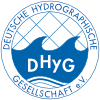HN Ausgaben wählen
- HN 132 (9)
- HN 131 (17)
- HN 130 (10)
- HN 129 (8)
- HN 128 (10)
- HN 127 (6)
- HN 126 (10)
- HN 125 (11)
- HN 124 (8)
- HN 123 (10)
- HN 122 (9)
- HN 121 (10)
- HN 120 (7)
- HN 119 (10)
- HN 118 (7)
- HN 117 (10)
- HN 116 (14)
- HN 115 (10)
- HN 114 (6)
- HN 113 (10)
- HN 112 (7)
- HN 111 (9)
- HN 110 (9)
- HN 109 (11)
- HN 108 (8)
- HN 107 (9)
- HN 106 (7)
- HN 105 (14)
- HN 104 (6)
- HN 103 (11)
- HN 102 (8)
- HN 101 (9)
- HN 100 (13)
- HN 097 (1)
Unter-Wasser-Drohnen für Hydrographie und Seebodenerkundung
Für die Durchführung hydrographischer Surveys sollten autonome Unter-Wasser-Fahrzeuge (AUVs) einen Quantensprung in Richtung Kostenreduktion bei gleichzeitig größerer Detailschärfe bewirken. Zwanzig Jahre nach den ersten Entwicklungen in Deutschland haben Anwendungen derartiger Geräte immer noch einen gewissen Exotenstatus. Dieser Artikel beschreibt einige kürzlich durchgeführte Ar-beiten, um den Stand der Technologie sowie beispielhafte Möglichkeiten für den Einsatz darzustellen.
AUV | Hybrid-AUV | SeaCat | SwapHead | Nadir-Gap | SAS
- Ausgabe: HN 114, Seite 12–17
- DOI: 10.23784/HN114-02
- Autor/en: Jörg Kalwa
Management bathymetrischer Daten beim Nautischen Informationsdienst des BSH
Bathymetrische Daten sind die gemessenen Tiefen von der Meeresoberfläche bis zum Meeresboden. Sie sind für den Nautiker sowohl bei der Routenplanung als auch bei der Routenüberwachung unerläss-lich. Eine sichere Schiffsnavigation kann nur mit aktuellen und zuverlässigen bathymetrischen Daten ermöglicht werden. Auch in anderen Bereichen, wie in der marinen Raumordnung, in der Energie- und Rohstoffgewinnung oder im Unfallmanagement auf Nord- und Ostsee, nimmt die Nachfrage nach bathymetrischen Produkten zu. Eine Vielzahl verschiedener Datenquellen, steigende Datenmengen durch verbesserte Erfassungssysteme und kürzere Erfassungszeiträume sowie erhöhte Anforderungen an die Datenqualität und die Datenverfügbarkeit verlangen automatisierte, standardisierte und revisi-onssichere Verfahren.
Datenmanagement | Seeaufgabengesetz | nautische Publikationen | ENC | Papierseekarte | bENC | Grid | Tiefendatenbank | Metadaten | 3D-Datenarchiv | Verschneidung | Generalisierung
- Ausgabe: HN 114, Seite 6–11
- DOI: 10.23784/HN114-01
- Autor/en: Jana Vetter
Digitalisierung auf allen Meeren
Umfassende Aufgaben für die neue BSH-Chefin
Seit November 2018 hat das Bundesamt für Seeschifffahrt und Hydrographie (BSH) in Hamburg und Rostock eine neue Präsidentin. Die Juristin Dr. Karin Kammann-Klipp¬stein hat die Aufgabe, den Übergang in die hochautomatisierte Schifffahrt in die Wege zu leiten. Um dieses Ziel zu erreichen, gibt es viel zu tun: Weltweit einheitliche Standards zu schaffen, damit die neuen hydrographischen Informationen verwertet werden können. Damit soll eine optimierte Routenplanung möglich sein. Ein wichtiger Beitrag zum Meeresumweltschutz.
BSH | Digitalisierung | Automatisierung | autonome Schifffahrt | Standardisierung | Meeresumweltschutz | Offshore-Windenergie | ImoNAV | ATAIR | LNG-Antrieb | GtL-Treibstoff
- Ausgabe: HN 113, Seite 56–58
- DOI: 10.23784/HN113-10
- Autor/en: Katrin Benner
Aus der Ferne in die Tiefe
Kartierung der Schleswig-Holsteinischen Ostsee durch Satellitendatenanalysen
Die Meeresbodensedimente und Substrate der Küstengewässer müssen alle sechs Jahre überwacht und der Zustand von Fauna, Flora und Habitaten muss bewertet werden. Zudem wird alle drei Jahre untersucht, welche Lebensräume wie besiedelt sind. Für die Seegrundkartierung, für die Quantifizierung der Habitattypen und für das marine Monitoring der Flachwasserbereiche werden heute Satellitendaten ausgewertet. Dadurch ist es möglich, eine flächenhafte Kartierung in vergleichsweise kurzer Zeit und kostengünstig durchzuführen.
Habitatkartierung | Seegrundkartierung | Seegrundklassifikation | Satellitendatenanalyse | Seegrundhabitat
- Ausgabe: HN 113, Seite 52–55
- DOI: 10.23784/HN113-09
- Autor/en: Knut Hartmann, Kim Knauer, Andreas Müller, Hans-Christian Reimers
High-resolution 3D sub-bottom profiling
Principles and case study
With sub-bottom profilers it is possible to investigate the subseafloor. However, common sub-bottom profilers are only providing two-dimensional depth slices of the subseafloor, that are difficult to interpret and that cannot display the complex three-dimensional reality of the subseafloor. Therefore there is a high demand for systems, capable of mapping the sediment three-dimensionally. The article describes what is possible with the SES-2000 sixpack from Innomar.
sub-bottom profiler | subseafloor | parametric effect | penetration depth | resolving capacity
- Ausgabe: HN 113, Seite 49–51
- DOI: 10.23784/HN113-08
- Autor/en: Fritjof Basan


